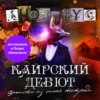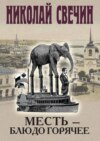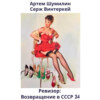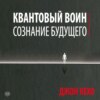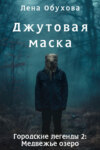Читать книгу: «Travels in North America, From Modern Writers», страница 24
Some of the officers landed, and went to visit two Esquimaux tents, which were situated within a low point of land, that formed the eastern side of the entrance to a considerable branch of the inlet. The inhabitants, men, women, and children, on beholding them, came running out, with loud and continued shouting. Two of the women had infants slung, in a kind of bag, at their back, much in the same manner as gypsies are accustomed to carry their children. There were seven other children, from twelve to three years of age, besides two infants in arms.
The officers purchased whatever things these people had to dispose of, and, in exchange for them, gave knives, axes, brass kettles, needles, and other articles; and then added such presents as they considered might be further serviceable to them. Though they appeared anxious to possess whatever the visitors had to give they did not exhibit any disposition to pilfer. And, in some of the bargains, particularly for a sledge and a dog, the articles, though previously paid for, were all punctually delivered.
In stature these Indians, like the Esquimaux in general, are much below the usual standard. The height of the men is from four feet and a half to five feet and a half, and of the women about four feet ten inches. Their faces, in the younger individuals, are round and plump: their skin is smooth, and their complexion not very dark: their teeth are very white, and their eyes small; their nose is small, and their hair black, straight, and glossy. All the women, except one, had their faces tatooed; and two of them had their hands tatooed also. The children were, in general, good-looking; and one of them, a boy about twelve years of age, was a remarkably fine, and even handsome lad.
The dress of the men consists of a seal-skin jacket, with a hood, which is occasionally drawn over the head. The breeches are also, generally, of seal-skin; and the boots, which are formed so as to meet the breeches, are of the same material. In the dress of the women, the drawers cover the middle part of the body, from the hips to one-third down the thighs; the rest of which, as far as the knees, is naked. The children are all remarkably well clad; their dress, both in the males and females, being, in every respect, similar to that of the men.
The tents which constitute the summer habitations of these Esquimaux, are principally supported by a pole of whalebone, about fourteen feet high. This pole stands perpendicularly, and has four or five feet of it projecting above the skins which form the roof and sides. The length of the tent is about seventeen feet, and the breadth from seven to nine; and the bed occupies nearly one-third of the whole apartment. The covering of the tent is fastened to the ground by curved pieces of bone.
Captain Parry, after taking leave of these his new acquaintance, directed his course towards England; and arrived in the river Thames about the middle of November.
With regard to the probable existence and accomplishment of a north-west passage into the Pacific Ocean, this indefatigable and accomplished officer remarks, that, as to the existence of such a passage, he does not entertain a doubt; but that he is not sanguine as to its ever being accomplished. The difficulties that are presented by the increasing breadth and thickness of the ice to the westward, after passing Barrow's Strait, added to the excessive severity of the climate, and the shortness of the season in which the Polar Sea can be navigated; these are circumstances which render almost hopeless any attempt to pass from the Atlantic westward. Captain Parry seems inclined to think that there is more probability of being able to effect the passage, by sailing from Behring's Strait, eastward, than from Baffin's Bay towards the west. But, in this case, it would be an impracticable passage for British ships. The great length of the voyage, the impossibility of taking out a sufficiency of provisions and fuel, and the severe trial to which the health of the crews would be subjected, by suddenly passing from the heat of the torrid zone, into the intense cold of a long winter, seem to render hopeless all our efforts to effect the voyage in this direction.
Twenty-seventh Day's Instruction.
LABRADOR AND GREENLAND
On the south-western side of Davis's Strait is the wild, extensive, and uncivilized country of Labrador. Its coast was first discovered by the Portuguese navigators; but the frigidity of its climate is such, that no settlements of any importance have ever been fixed upon its shores. Even the extent of the country has been but imperfectly ascertained; for all the knowledge we have hitherto obtained respecting it, relates only to the coast. The inland territory remains yet unexplored.
Captain George Cartwright resided on the coast of Labrador, at different intervals, for sixteen years. He states that the face of the country, as far as he could discover it, was mountainous and desolate; and that some of the mountains were of considerable elevation. The soil, in some parts of the southern coast, appears, at first sight, to be fertile and covered with verdure; but, on examination, it is found to be poor, and the verdure is that of coarse plants, which would not serve as food for horses, cattle, or sheep. Some attempts have been made to cultivate this coast, but the depredations of bears and wolves have proved a formidable impediment; and such is the severity of the climate, that cattle must be housed for nine months in the year.
The whole eastern coast of Labrador exhibits a very barren appearance: the mountains rise abruptly from the sea, and are composed of rocks, that are thinly covered with peat earth. This produces only stunted spruce trees, and a few plants; but the adjacent sea, and the various rivers and lakes, abound with fish, fowl, and amphibious animals. Springs are rare, and fresh water is chiefly supplied by melted snow. In the various bays of this coast, there are numerous islands, on which eider-ducks, and multitudes of other sea-fowl breed. On some of the larger islands there are deer, foxes, and hares. The fruits of Labrador consist chiefly of currants, raspberries, cranberries, whortle-berries, apples, and pears. Among the mineral productions is a kind of felspar, which, when polished, exhibits a display of brilliant and beautiful colours.
The climate of this country, though severe, is healthy. There is little appearance of summer till about the middle of July; and, in September, winter indicates its approach. During summer the heat is sometimes unpleasant; and the cold of winter is of long duration, and generally intense. In Labrador, as in all other countries of northern climates, the quadrupeds are clothed with a longer and thicker fur during winter, than in summer; and many of the birds have a softer down, and feathers of a closer texture, than those of milder countries. Some of the animals also assume a white clothing at the commencement of winter.
The native inhabitants of Labrador are mountaineers and Esquimaux, between whom there subsists an invincible aversion. The former, who inhabit the interior districts towards the north, are of dark colour, and robust constitution, though their limbs are small. They subsist chiefly on rein-deer, which they are very dexterous in killing: they also kill foxes, martens, and beavers. As these people live a wandering life, they never build houses; but they construct a kind of tents, and cover them with branches of trees, and with deer-skins. Their summer dress consists of skins freed from the hair; and their winter-dress is formed of beaver and deer-skins, with the hair on. During the summer they traverse the country, in canoes, along the rivers and lakes. These canoes are covered with the bark of the birch-tree; and, although they are so light as to be easily carried, some of them are large enough to contain a whole family, together with the materials of their traffic. In winter the mountaineers of Labrador pass over the snow, by means of what are called snow-shoes.
These mountaineers are esteemed an industrious people. They bear fatigue with almost incredible resolution and patience; and will often travel two successive days without food. They, every year, come to the Canada merchants, who have seal-fisheries on the southern coast, and bargain their furs, in exchange for blanketing, fire-arms, and ammunition; and they are immoderately fond of spirits. Some of them profess to be Roman Catholics; but their whole religion seems to consist in reciting a few prayers, and in counting their beads.
It is customary with these Indians, to destroy such persons among them as become aged and decrepit. This practice they endeavour to vindicate from their mode of life: for they assert that those who are unable to procure the necessaries requisite for their existence, ought not live merely to consume them.
The Esquimaux, who inhabit the northern parts of the country, are a race similar to the Greenlanders. They have a deep tawny or rather copper-coloured complexion; and are inferior in size to the generality of Europeans. Their faces are flat, and their noses short. Their hair is black and coarse; and their hands and feet are remarkably small. Their dress, like that of the mountaineers, is entirely of skins; and consists of a sort of hooded shirt, of breeches, stockings, and boots. The dress of the different sexes is similar, except that the women wear large boots, and have their upper garment ornamented with a kind of tail. In their boots they occasionally place their children; but the youngest child is always carried at the back of its mother, in the hood of her jacket. The women ornament their heads with large strings of beads, which they fasten to the hair above their ears.
The weapons of these Esquimaux are darts, bows, and arrows; and their food consists chiefly of the flesh of seals, deer, and birds; and of fish. Some of their canoes are near twenty feet in length, and not more than two feet wide. They each contain only one person; are formed of a frame-work, covered with skins; and are so extremely light, that they are easily overset. Notwithstanding this, and the circumstance that few of the Esquimaux are able to swim, these people are able to navigate them, in safety, without a compass, and even in the thickest fogs. When the ground is covered with snow, they traverse the country in sledges, drawn by dogs.
During winter, they live in houses, or rather in a kind of cavern, which they sink in the earth; and, during summer, they occupy tents, made circular with poles, and covered with skins. Their only beverage is water. The men are extremely indolent; and all the laborious occupations, except that of procuring food, are performed by the women. They sew with the sinews of deer; and much of their needlework is very neat. The Esquimaux cannot reckon, numerically, beyond six; and their compound numbers reach no further than 21: all beyond this are called a multitude.
The principal articles of export, obtained from the coast of Labrador, are cod-fish, salmon, oil, whalebone, and furs of various kinds.
NEWFOUNDLAND
Near the south-eastern extremity of Labrador is the island of Newfoundland; which, at present, constitutes an important station, for the British cod-fisheries. It is of triangular form, and about three hundred miles in circuit; and, though it lies between the same parallels of latitude as the south of France, its climate is very severe. In winter the rivers are frozen to the thickness of several feet; and, during this season, the earth is covered with snow, and the cold is so intense that the power of vegetation is destroyed. The coasts abound in creeks, roads, and harbours; and the interior of the island is full of steep rocks, woody hills, and sandy valleys; and of plains, interspersed with rocks, lakes, and marshes. A very small portion of it is at present cultivated; for neither the soil nor the climate is favourable to productions necessary to the support of human life. St. John's, the chief town of the island, is a mean and ill-built place, with narrow and dirty streets. It is situated on the south-eastern part of the coast, and has a considerable harbour.
This island formerly belonged to the French; but, in 1713, it was ceded to the English, to whom it still belongs. Its chief importance is derived from its vicinity to an immense bank, beneath the surface of the ocean, which is frequented by myriads of cod-fish. On this bank there are annually employed more than two thousand fishing-vessels; and four hundred merchant-ships, in conveying the fish to different parts of the world. All the fish are caught by lines; and they are conveyed to the shores of Newfoundland, to be salted and dried, or otherwise prepared for exportation. The Newfoundland fishery usually commences about the middle of May, and continues till the end of September.
GREENLAND,
Is an extensive peninsula, or, as some geographers believe, an immense island, lying north of the 60th degree of latitude, and between the 48th and 70th degrees of west longitude. It is said to have been originally discovered, as early as the tenth century, by a party of exiled Icelanders, who gave to it the name of "Greenland," from its exhibiting a much greater appearance of verdure than Iceland. Cape Farewell, its southernmost point, is a small island divided from the shore by a narrow inlet.
The interior of the country is dreary and mountainous; and some of the mountains are so lofty, that they are visible to the distance of more than forty leagues. They are covered with perpetual snow; and ice and snow, like the glaciers of Switzerland, fill the elevated plains, and even many of the valleys. The lowlands, adjacent to the sea-coast, are clothed with verdure during the summer season. The coast is indented with many bays and creeks, which extend far into the land; but many parts of it are altogether inaccessible by shipping, on account of the enormous masses of floating ice, which abound in the extreme northern seas.
Christian Missionaries were settled in this country, by the Danes, many centuries ago; and they formed churches and monasteries in different parts, through an extent of country nearly two hundred miles in length. From authentic records it appears that Greenland was anciently divided into two districts, the westernmost of which contained four parishes and one hundred villages; and the other, twelve parishes, one hundred and twenty villages, the see of a bishop, and two monasteries. The present inhabitants of the western districts are, however, separated from those of the east by impassable deserts and mountains.
This country is subject to Denmark; and the parts of it that are chiefly visited by Danes and Norwegians, lie between the 64th and 68th degrees of north latitude; and, to this distance, the climate is said not to be very severe. At one time there was a Danish factory as far north as the 73d degree; but, beyond the 68th degree of latitude, the cold in winter is, in general, so intense, that even the rocks burst by the expansive power of the frost. Thunder and lightning seldom occur in Greenland; but the aurora borealis is frequently visible, particularly in the spring of the year; and is often so bright and vivid, as to afford sufficient light for a person to read by it.
Some of the southern parts of Greenland are fertile; but, in general, the soil resembles that of other mountainous countries; the hills being barren, and the valleys and low grounds being rich and fruitful. The principal quadrupeds of this country are rein-deer, dogs resembling wolves, Arctic foxes, and white or polar bears. The walrus and several kinds of seals frequent the shores. Eagles and other birds of prey are numerous. Whales and porpesses abound along the coasts; and the adjacent sea and bays yield an abundance of holibut, turbot, cod, haddocks, and other fish.
The inhabitants of Greenland are supposed to have had their origin from the Esquimaux of Labrador, for they nearly resemble that people. They are short, and somewhat corpulent; and have broad faces, flat noses, thick lips, black hair, and a yellowish tawny complexion. The keenness of the wind and the glare of the snow, render them subject to painful disorders in the eyes: they are also afflicted with many diseases, which tend to render them short lived. They are a quiet, orderly, and good-humoured people; but of a cold, phlegmatic, and indolent disposition. They never wash themselves with water, but lick their hands, and then rub their faces with them; in the same manner as a cat washes herself with her paws. In most of their habits they are extremely filthy.
When animal food can be procured, they prefer it to any other; but, in times of scarcity, they are sometimes compelled to subsist on sea-weeds, and on roots dressed in train-oil and fat. The intestines of animals, and offals of various kinds, are accounted by them as dainties.
Their clothes are chiefly made of the skins of rein-deer and seals. The men wear their hair short; and commonly hanging down from the crown of the head on every side. The women, on the contrary, seldom cut their hair.
The Greenlanders all speak the same language, though different dialects prevail in different parts of the country; and so numerous are the words of their language, that, like the Chinese, they are said to have a proper word for every object or art that requires distinction.
These people have no traditions respecting the memorable actions of their ancestors; further than that, many winters ago, some Norwegian settlers were slain by the population of the adjacent country, who unanimously rose in arms against them. Among other strange notions entertained by the Greenlanders, they imagine that rain is occasioned by the overflowing of reservoirs in the heavens; and they assert that, if the banks of these reservoirs should burst, the sky would fall down. The medical practice in this country is confined to a set of men who have the appellation of "Angekoks," or conjurers.
When a Greenlander is at the point of death, his friends and relatives array him in his best clothes and boots. They silently bewail him for an hour, after which they prepare for his interment. The body, having been sewed up in his best seal or deer-skin, is laid in the burying-place, covered with a skin, and with green sods; and, over these, with heaps of stones, to defend it from the attack of predaceous animals. Near the place of interment, the survivors deposit the weapons of the deceased, and the tools he daily used. With the women are deposited their knives and sewing implements. The intention in so doing is, that the person departed may not be without employment in the next world.
The Greenlanders are said to worship the sun, and to offer sacrifices to an imaginary evil spirit, that he may not prevent their success in hunting and fishing. They have a confused notion respecting the immortality of the soul, and the existence of a future state; and they believe that the spirits of deceased persons sometimes appear on the earth, and hold communication with the "Angekoks," or conjurers, to whom peculiar privileges and honours belong.
The traffic that is carried on among the Greenlanders is simple and concise, and is wholly conducted by exchange or barter. These people very rarely cheat or take undue advantage of one another; and it is considered infamous to be guilty of theft. But they are said to glory in over-reaching or robbing an European; as they consider this a proof of superior talent and ingenuity.
Wherever a great assembly or rendezvous of Greenlanders takes place, as at a dancing-match or any grand festival, there are always some persons who expose their wares to view, and who publicly announce what goods they want in exchange for them. The chief articles of traffic, with Europeans, are fox and seal-skins, whale and seal-oil, whalebone, and the horns of narwhals. For these, they receive, in exchange, iron points for their spears, knives, saws, gimlets, chisels, needles, chests, boxes, clothing, and utensils of various kinds.
The chief festival of the Greenlanders is that which they call the sun-feast; but this is merely held for the purpose of dancing and other amusements, and not for any religious acts or ceremonies. It is held about the commencement of the new-year, and for the purpose of rejoicing at the return of the sun, and the renewal of weather for hunting and fishing. At this feast they assemble, in various parts of the country, and in large parties. After gorging themselves with food, they rise up to play and to dance. Their only musical instrument is a drum; and the sound of this they accompany with songs, in honour of seal-catching, and exploits in hunting. The Greenlanders do not, on these occasions, intoxicate themselves with ardent spirits, like some of the American Indians; for their only beverage is water. There are other dancing-meetings held in the course of the year; but these are all conducted in a similar manner. The Greenlanders occupy much of their time in hunting and fishing. On shore they hunt rein-deer and other animals; and at sea they pursue whales, seals, and walruses: they also catch great quantities of fish and sea-fowl. Their canoes are formed of thin boards, fastened together by the sinews of animals, and covered with a dressed seal-skin, both above and below; so that only a circular hole is left in the middle, large enough to admit the body of one man. Into this hole he thrusts himself, up to the waist; after which he fastens the skin so tight round his body, that no water can enter. Thus secured, and armed with a paddle, which is broad at both ends, he ventures out to sea, even in the most stormy weather; and, if he be unfortunate enough to have his canoe overset, he can easily raise himself by means of his paddle. Besides this description of canoes, the Greenlanders have boats so large that they will contain fifty persons, with all their tackle, baggage, and provisions. These carry a mast and a triangular sail; the latter of which is made of the membranes and entrails of seals. The management of the larger boats is always given to women; who also perform the whole drudgery of the household, even to the building and repairing of the dwellings.
During winter, the Greenlanders live in houses, and, during the summer, in tents. The houses are constructed of stones, with layers of earth and sods between them; and the rafters are covered with bushes and turf. The entrance is through a hole in the roof, which serves also as a chimney. The walls are hung with skins, fastened on by pegs, made of the bones of seals. These huts are divided, by skins, into several apartments, according to the number of families which inhabit them; and the inhabitants sleep on skins, upon the ground. The huts are well warmed with fires; and are lighted by lamps, filled with train oil, and furnished with moss instead of a wick. These lamps burn so bright as to give considerable heat as well as warmth.
At the outside of the dwelling-house are separate buildings, for store-houses, in which the inhabitants lay up their stock of provisions, train oil, and other useful articles. Near the store-houses they arrange their boats, with the bottoms upward; and they hang beneath these their hunting and fishing-tackle, and their skins. The summer-tents of the Greenlanders are of a conical form, and are constructed of poles, covered, both inside and out, with skins.
The seas in the vicinity of Greenland are, every year, frequented by both European and American vessels, employed in the whale-fishery. Such of these as enter Davis's Strait, generally resort to Disco Bay; and a few have penetrated even still further north than this. It is stated that, in the year 1754, a whaler, under the command of a Captain Wilson, was conducted, on the eastern side of Greenland, as far north as to the 83d degree of latitude: the sea was clear of ice, as far as the commander of this ship could descry; but as he did not meet with any whales, and began to apprehend some danger from proceeding onward, he returned; and, in the same year, another whale-fisher sailed as far north as to 84½ degrees. These are the highest northern latitudes which any vessels have hitherto reached.



